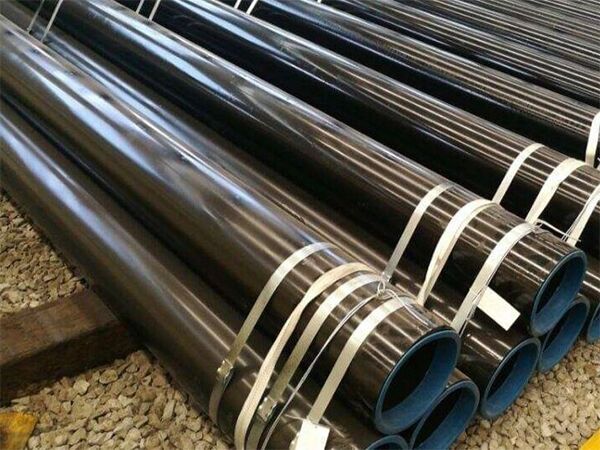Why is the corrosion Resistance of seamless steel pipes superior to welded steel pipes?
Seamless steel pipe because of its excellent performance, known as "industrial blood vessels", it is the basic components of many industries, in the oil, natural gas, chemical, energy, boiler manufacturing and other fields have an irreplaceable position. With no weld, high strength and good corrosion resistance, it is widely popular in the global industrial market. But what is it that makes seamless steel pipe more corrosion-resistant than welded steel pipe? This article mainly explores the root cause of this superiority, and has an in-depth understanding of seamless steel pipes.

The advantages of seamless steel pipe corrosion resistance
1. No weld design
The seamless steel pipe is made by heating the billet and rolling it with a solid round rod. It is formed in one piece, the structure is complete, and there is no potential weak point of weld. The weld of the welded steel pipe may appear segregation, grain coarsening or cracking due to the heat effect, which is easy to become the starting point of corrosion, and the seamless steel pipe avoids this defect. It is precisely because of this seamless structure of the seamless pipe significantly improves its corrosion resistance, even in harsh conditions can provide reliable performance, thereby reducing the possibility of failure in long-term work, for oil and gas exploration, chemical processing and power generation and other industries have brought great benefits.
2. Uniform metal structure
In the manufacturing process, the seamless steel pipe has undergone hot rolling, cold rolling or cold drawing manufacturing processes. In this process, the seamless steel pipe through the strict heat treatment and rolling process, the internal grain distribution is more uniform, reduce its internal defects, improve the overall corrosion resistance. The edge of the welded steel pipe needs to be welded, and the weld area may reduce the microstructure properties of the metal due to local heating treatment.
3. Higher density and densification:
In the manufacturing process of seamless steel pipe, high temperature and high pressure processes such as perforation and rolling are used, and the internal steel is more dense, reducing pores, inclusions or other microscopic defects, and further improving its corrosion resistance.
4. Higher purity of the material:
The seamless steel pipe uses high-quality raw materials, and the production process avoids the impurity pollution that may occur in the manufacture of welded steel pipes, so that it has better corrosion resistance.
How to choose the right seamless steel pipe?
Because of its diverse materials and manufacturing processes, seamless steel pipes can meet a variety of complex conditions. Choosing the right seamless steel pipe needs to be combined with the specific use environment and needs.
Step 1: Material
Seamless pipes come in many different materials, including carbon steel, alloy steel, stainless steel, etc. The characteristics and application scenarios of different materials are not the same, such as carbon steel is only suitable for conventional fluid transport pipelines, while alloy steel and stainless steel have strong corrosion resistance and can be used in a variety of harsh environments.
2. Use
The use of different seamless pipes is different, and the appropriate pipe is selected according to the corresponding use.
Seamless steel pipe for fluid transportation: suitable for transporting water, oil, natural gas and other media, requiring pipelines with high pressure resistance and sealing.
Seamless tube for boiler: suitable for working in high temperature and high pressure environment, requiring high temperature strength and oxidation resistance. Including low and medium pressure boiler tube and high pressure boiler tube.
Structural seamless steel pipe: mainly used for supporting parts of building and mechanical structure, requiring high strength and good rigidity.
3. Processing technology
The processing process of seamless steel pipe is hot rolled, cold rolled or cold drawn, and the product performance and quality of different processing processes are not the same.
Hot rolled seamless steel pipe: suitable for large diameter, thick wall steel pipe, commonly used in oil and natural gas transmission main pipeline.
Cold-rolled seamless steel pipe: high surface finish, high dimensional accuracy, suitable for the production of small-caliber steel pipe. Mainly used for precision mechanical equipment and hydraulic pipelines.
Cold-drawn seamless steel pipe: higher strength, higher dimensional accuracy, mainly used in high-pressure equipment and automotive hydraulic pipelines.
Conclusion
With its high strength and corrosion resistance, seamless steel pipes play an important role in the industrial field, especially in high pressure, high temperature and corrosive environments. Compared with welded steel pipes, seamless steel pipes have significant advantages in corrosion resistance due to their non-weld design, uniform metal structure, higher density and other characteristics.
read more: What is a seamless steel pipe? or How to choose seamless steel pipe and welded steel pipe?
